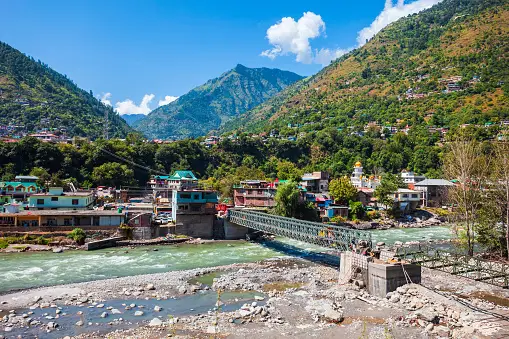Growing struggle between Business Vs conservation in Everest, Nepal
Introduction to Everest
The Everest area has been the first choice for thousands of adventure travelers worldwide. They wish to hike Mount Everest, the high base camp of the highest mountain on Earth and the most beautiful landmark in the world.
Mount Everest, a majestic peak rising above sea level, is the highest mountain on Earth. It is locally known as Sagarmatha in the Nepali language. It is located east of the Mahalangur Himal sub-range of the Himalayas, in the Solukhumbu District, which is in the Sagarmatha Zone of Nepal. Mt. Everest is 8,848 meters above sea level.
Everest is popular with climbers worldwide, which drives Nepal’s tourism industry to increase. However, the commercialization and development of tourism have recently caused debate around their effects on the Everest region, ending in a dilemma between business and conservation.
Introduction to growing business in Everest and its positive impact
Everest region has experienced a rise in trade in the past few years, which has been mostly generated by the tourism industry. Here, the gateway to the world’s highest peak, Mount Everest, has become a magnet for enthusiastic adventures, nature lovers, and climbers from different corners of the world. The establishment of entities like trekking agencies, hotels, restaurants, and souvenir shops provides job opportunities for the local people. On the one hand, it has also contributed to the infrastructure upgrade in the area. Better transport, communication, and accommodation facilities have made tourism more accessible, thus improving the local economy and standard of living.
The growing business activities have helped conserve and preserve the Everest area. With a rising number of visitors, the importance of preserving the area’s biodiversity and cultural heritage has emerged as very important. Different companies have started eco-friendly practices, such as waste management and sustainable tourist attractions, to ensure environmental sustainability.
Ban of Helicopter tours for safety
The Supreme Court has ordered the government to regulate Mount Everest climbs by limiting permits and banning non-emergency helicopter use. Climbers must list items taken and returned, with refunds contingent on verification. The court stressed climate change’s impact on the environment and local communities, urging better waste management and cleanup efforts.
Following a tragic accident in 2023, the National Aviation Council closed the Everest Base Camp helicopter tour with landings due to safety concerns. This decision came after a Manang Air crash while landing at the base camp. However, in January 2024, the Everest helicopter tour reopened with updated policies and strict regulations for airlines flying to Lukla. So, the people wanting to witness Everest also have the option of an Everest base camp helicopter return tour.
Wildlife conservation struggle
Wildlife in the Everest area encounters problems with conservation as a result of an increase in human activity and climate change. The Everest region is one of the homelands for rare wildlife species like snow leopard, Himalayan black bear, and red panda, which are endangered due to habitat fragmentation, illegal wildlife trade and pollution. This is significant, for as tourism grows, the pressure on the environment increases, which results in deforestation and the disturbance of wildlife habitats. Climate change adds to the severity of these problems, changing the possibility of food and water for animals. Conservation initiatives are impeded by available funding and the region’s inaccessibility, which hampers the ability to adequately track and protect the ecosystem.
Community-driven conservation programs and eco-friendly tourism activities are being developed as these problems are being addressed. Local communities engage in conservation, offering alternative income sources and raising awareness about wildlife preservation. Implementing stricter legal frameworks and monitoring of tourism activities, which lead to preserving wildlife habitats, is being done. In spite of that, a lot of funds and collaboration with government agencies, conservation organizations, and local populations need to be invested to secure the long-lived wildlife of the area of Everest.
Struggle to conserve business.
Maintaining businesses in the Everest region is a complex task that requires balancing sustainable development with the environment and culture preservation. The fast increase of commercial activities connected to tourism, such as hospitality, food, and trekking, has given economic advantages to local communities, but this also raises more environmental sustainability questions.
To tackle these problems, we require thoughtful tourism practices that put the green movement first. This applies to things like promoting green infrastructure, waste management approaches, and practices for energy efficiency. Governmental policies and regulations are paramount in enabling businesses to run in the most sustainable manner possible. This includes a cap on the number of permits issued, imposing waste management by-laws, and stimulating sustainable tourism procedures.
Solution: Finding a balance
Accomplishing this goal necessitates broad-based inclusivity of approaches that promote sustainable business activities, environmentally friendly business operations, and community participation. This is done by limiting the number of tourists, enforcing severe environmental rules, and encouraging eco-friendly businesses and behavior.
To reduce the environmental burden in the region, it is important to invest in greener technology, renewables, and recycling. Moreover, it is important to involve local communities in decision-making and ensure that local folks can benefit from the tourism economy. By implementing these initiatives, we can thus conserve the Everest region’s natural beauty and cultural heritage for posterity.
Stay in touch to get more updates & news on Discover Tribune!






